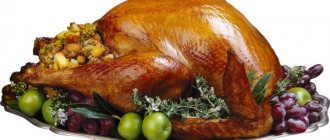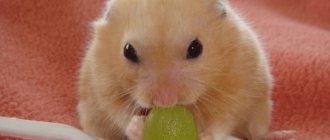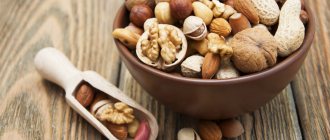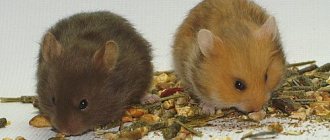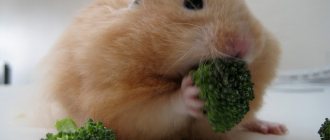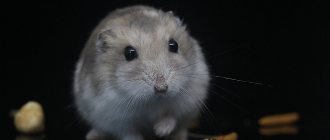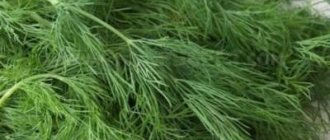Honey for hamsters
Like other sweets, honey is contraindicated for hamsters. It contains too much glucose and can also cause an allergic reaction. However, in small quantities it is allowed to be given to a sick animal as medicine.
Honey for medical purposes
Veterinarians use sweet medicine in several cases:
- An animal with a cold can be given one drop mixed with milk and warm water.
- A doctor may prescribe it for vitamin E deficiency.
- Honey on the fur will force your pet to wash itself. Long hair falls into pellets that can clog the intestines, so veterinarians advise lubricating it with honey several times a week. The animal will begin to lick the treat, and the hairs, sticking to the honey, will not cause harm to health.
Any treatment should first be discussed with your doctor. Make sure the rodent has no allergies and is healthy enough for these procedures.
Results
Thus, of all the known sweets, be it candy, chocolate, cake or ice cream, none of the above is recommended for hamsters to eat.
It is best to feed your pet food that is familiar to him, such as cereals or greens. We described in detail here what kind of grass can be given to hamsters, where to collect it and how to store it.
Another recommendation is that rodents at home are quite susceptible to gaining excess weight, so it is imperative that your pet’s cage must have a running wheel.
Another accessory that will help hamsters not gain excess weight is a walking ball; read how to choose and use it here.
Therefore, to the question, is it possible to give sweets to hamsters? the answer will be simple. Rodents are strictly prohibited from giving sweets. Don't try to find out for sure, don't endanger your pets.
Did you like the article? Share with friends: [supsystic-social-sharing id=”1"]
- Related Posts
- Can hamsters eat pomegranate?
- Can hamsters have cookies?
- Can hamsters have milk, cottage cheese, yogurt and other dairy products?
« Previous entry
Black and white bread
In natural wild conditions, bread is inaccessible to rodents, unless they live near populated areas. Only domestic hamsters can enjoy it, but veterinarians unanimously do not recommend feeding them fresh flour products.
White flour is made from wheat, which is always present in dry mixes, and is acceptable and healthy for your hamster. However, in the process of grinding and processing, grain changes not only its structure, but also its qualitative composition. The product is additionally bleached to make it look presentable and last longer. As a result, the flour is deprived of most of its vitamins, minerals and beneficial fiber.
The resulting starch is a heavy carbohydrate; it can cause obesity in a hamster and, as a result, diabetes, as well as joint problems. In addition, it has the following negative effects on the body:
- negatively affects the functioning of the urinary system;
- provokes disruptions in the normal functioning of the adrenal glands and pancreas;
- leads to disruption of the endocrine system (thyroid gland).
Yeast is added to the dough kneaded for bread, as well as leavening agents, flavorings, stabilizers and other synthetic additives. A hamster's consumption of these completely unhealthful components is fraught with digestive disorders, manifested by increased gas formation and even (in rare cases) alcohol poisoning (due to yeast fermentation). Yeast is especially dangerous because it can radically change the intestinal microflora.
If you give a hamster bread, he will develop quite painful conditions:
- flatulence, vomiting, nausea;
- diarrhea;
- refusal to eat due to loss of appetite;
- breathing problems (choking);
- lethargy and decreased activity;
- heart failure;
- disorientation;
- and even death.
White bread, especially soft and fresh bread, just baked, is absolutely contraindicated for hamsters.
The same attitude applies to black bread, because it is also made with yeast. Although rye flour is less starchy, and there is no need to bleach it, hamsters still cannot eat baked goods from it. The ban is associated with the increased acidity of the baked product, due to which disturbances in the gastrointestinal tract are observed. If you give a hamster rye or black bread, it can cause:
- heartburn;
- gastritis;
- constipation;
- colitis;
- ulcer.
Crackers
If fresh bread has no place on the hamster’s menu, then the attitude towards crackers is different. After all, during heat treatment (drying in an oven), most of the yeast fungi die. Dried bread pieces (both wheat and rye) contain enough fiber, much less carbohydrates, and also contain a number of essential and beneficial minerals (Mg, Fe, Ca). Considered dietary, dried bread no longer causes fermentation; when consuming it, the hamster does not experience flatulence. Rusks normalize the functioning of the gastrointestinal tract and restore metabolic processes in the endocrine system.
A piece of dry bread will serve as a worthy and healthy replacement for mineral or chalk stones, on which hamsters have to grind down their front teeth, which grow throughout their lives.
On store shelves there is a huge assortment of crackers already prepared and packaged in beautiful wrappers; it is tempting to buy and pamper your pet hamster with them. But this should not be done under any circumstances, since all sorts of flavor enhancers, flavorings and stabilizers are added to purchased products at the factory. These substances, even in small quantities, are deadly to small rodents. It is more desirable and much safer to dry bread yourself, giving preference to grain and bran products.
Is it possible to have white?
After wheat is processed, a large percentage of starch, which is a complex carbohydrate, remains in the flour. Constant addition of starch can cause unpleasant symptoms such as bloating and flatulence.
The presence of yeast in fresh baked goods can cause severe diarrhea, loss of space and decreased activity. Nausea and vomiting can lead to loss of appetite and complete refusal to eat.
Frequent eating of bread exposes the body to the development of diseases:
- Enlarged thyroid gland.
- Inflammation of the pancreas and intestinal tract.
- Kidney damage.
- Disruption of the cardiovascular system.
Sweets are harmful
People love sweets very much, and sometimes it seems to them that hamsters also love them. Unfortunately, sweets, honey, sugar and chocolate are contraindicated for pets. They are destructive products for them.
Chocolate contains a substance called theobromine, it is absolutely safe for humans or cats, but is poisonous for rodents. Even if at first glance it seems that everything is fine with the pet, this is far from the case. The rodent experiences pain in the digestive tract and, with large doses, dies within two days.
Can hamsters eat chicken?
Chicken can be added to the diet of hamsters; it contains many vitamins and beneficial elements, including phosphorus and potassium. You should cook meat without spices or even salt. Hamsters gobble up boiled chicken by both cheeks. It is better to choose fillet, it does not contain cholesterol. Chicken liver is also suitable, it is also well digestible.
Pets should be fed twice in the morning and once in the evening. You need to do this at a certain time to form a habit.
Boiled chicken is especially useful for females who are expecting offspring. They require twice as much protein as a normal pet. This diet strengthens her immune system and helps her survive stress. Meat can also be replaced with boiled eggs; they contain a sufficient amount of protein.
Beef liver and heart will also be useful, as they improve blood composition. Don't forget about the broth; rodents love it. You can add fresh parsley or any herbs to it.
Fried delicacies are strictly prohibited. This is a high-calorie food that adversely affects the organs, especially the heart and liver. Obesity and passive behavior may occur. Don’t forget that after processing, food loses all its vitamins and becomes less healthy.
Features of the diet of hamsters
A hamster's diet depends on its species. The diet of Djungarian hamsters includes fruits and vegetables. After all, Djungarians are steppe hamsters. They are used to eating “juicy” food, getting liquid from it.
Syrian hamsters in nature live in meadows (crop fields), forest-steppes and at the foot of the mountains. Therefore, they love to eat wheat, oats, corn, seeds and greens.
Hamsters love to stockpile food. Therefore, if the bowl is empty, this does not mean that the hamster has eaten everything. Perhaps he hid the food in a secluded place.
The serving size should be small. Then the hamsters' reserves will become smaller.
The number of meals for all types of hamsters should be at least twice a day (morning and evening).
Hamsters' nutrition must be correct. In winter, add vitamins to your hamster's diet.
Your hamster's diet should include:
- Vegetables – tomato and cucumber, zucchini, pumpkin.
- Greens – fresh beet leaves, oat and wheat sprouts.
- Fruits – apple, pear.
- Grain – watermelon seeds, oats, millet.
Add dried fruits, peas and beans (dried) to your Djungarian hamster’s diet 1-2 times a month.
What not to give to Djungarian hamsters
You should not give your pet everything. There are foods that are highly not recommended for dzhungarik:
- sausages and frankfurters (high fat content, salt);
- grilled meat;
- sorrel (large amount of acid);
- mint (menthol has a negative effect on the stomach);
- mushrooms;
- almonds (the presence of hydrocyanic acid makes them poisonous to hamsters);
- white cabbage (causes excessive gas formation);
- citrus;
- Exotic fruits;
- onions, garlic (too many essential oils);
- dates (lots of sugar);
- acorns (tannins in the composition negatively affect the gastrointestinal tract);
- pits of apples, cherries, apricots (they are poisonous to the hamster).
It will be useful for you to read about what kind of cage a Djungarian hamster should have.
What should you not feed Syrian hamsters?
Some owners, not knowing what to feed their hamsters is not recommended, add foods to their feeder that can harm the pet. To avoid sad consequences, you should familiarize yourself with the list of prohibited products. This:
- Dairy products: cream, sour cream, cheese, butter (with the exception of low-fat cottage cheese);
- fatty fish, fatty meats (pork, lamb, beef), lard;
- sweets: sugar, chocolate, baked goods;
- salt, spices, herbs;
- dry food for cats and other animals;
- some types of nuts: chestnuts, acorns, almonds, Brazil nuts;
- sour plants and fruits: sorrel, lingonberry;
- citrus fruits, various exotic fruits;
- berry seeds;
- mushrooms;
- potatoes, their peels and sprouts;
- cabbage;
- branches of coniferous trees;
- unknown insects.
Can hamsters eat bread?
Anyone who has kept hamsters at home dreams of these furry animals living as long as possible. The key to a healthy and long life for rodents is proper nutrition. You can rely on specialized ready-made food, but you also want to pamper your pet. We are ready to give the animal the best of what we ourselves like, often forgetting that hamsters have a different way of life and our treats - sweets, ice cream, cheese, smoked meats - are not at all suitable for the rodent’s digestive system. However, can hamsters eat bread? Let's figure it out.
What food can you offer your hamster from your table? The first thing that comes to mind is to feed your pet bread, but “can hamsters have bread”?
It would seem that it is the most natural product, based on flour from good, high-quality grain. However, with this diet, the hamster may soon become sad and lose its healthy appearance. You should not overuse this product; flour products can be given to your hamster in limited quantities.
Hamster breeding
Animals become sexually mature very early, within a month from birth. But, provided that you are not in a hurry with breeding, it is still better to let the animal grow up to five months. It is necessary to happen in an area that does not belong to any of the pair of hamsters, so they will be more comfortable. It is best to do this in the late afternoon.
Within a week after the event, if the female was able to become pregnant, her nipples will swell, and after 2-3 weeks the babies will be born
It is important that the male must be separated from the pregnant and lactating female; he can even eat the cubs, and the female becomes overly aggressive, protecting the children
After giving birth, the female should not be disturbed or touched for two weeks. You don't even need to clean the cage. The main thing is to provide her with enough tasty and healthy food. Baby animals can usually be separated from their mother at the age of a month.
Water for the hamster
The water in your hamster's drinking bowl must be changed daily, no matter whether he drank a lot the previous day or very little. There is an opinion that hamsters get the moisture they need from vegetables and fruits, but this is not true
Without clean water, a rodent can die in a couple of days
There is an opinion that hamsters get the moisture they need from vegetables and fruits, but this is not true. Without clean water, a rodent can die in a couple of days.
It is advisable to give the animal filtered or well water, avoiding chlorinated tap water.
Hamsters are unpretentious animals when it comes to food; they happily gnaw on everything that is put in their bowl, but the owner must carefully monitor its diet in order to prolong the life of their beloved pet.
Hard food. A very convenient way to feed. As a rule, this ready-made feed mixture can be purchased at the store. It contains nuts, wheat, pea seeds, corn, oats and sunflower seeds. In order to combine the process of feeding a hamster with the process of grinding down its long teeth, which it also needs, it is recommended to buy sticks covered with grains. This way the hamster will train the skills of independently obtaining food and have healthy teeth.
When choosing food in a store, you should pay attention to the presence of vitamin supplements and, of course, the expiration date. Then you don’t have to worry about the normal growth and development of your hamster.
Fresh food. Your pet's daily diet must include fresh and, best of all, green food. From fruits, hamsters will benefit from apples, peaches, bananas, dried fruits - dried apricots, raisins. During the season of fresh greens, it is useful to pamper your hamster with a leafy mixture of dandelions, parsley, lettuce and tree leaves.
Animal proteins. Hamsters are not vegetarians, and by their nature their bodies require animal protein. Dairy products with 0 or 1% fat content are well suited for these purposes: kefir, cottage cheese, yogurt without additives. Occasionally, you can give chicken meat boiled without salt and peeled shrimp. Stores offer special food insects in dried form, but not all pets like them.
Thin twigs and hay. Suitable as entertainment or additional food. Hamsters use hay to build nests, and twigs (preferably from fruit trees) are well suited for grinding down rapidly growing incisors.
Vitamins and minerals. Usually, special food for hamsters contains, in addition to the grain component, a vitamin complex. But in the winter-spring period, or for females during pregnancy and nursing, it is advisable to introduce independent vitamins into the diet. Packaged vitamins are preferable. Among those sold by weight, there are often low-quality, expired products.
Water. Hamsters drink quite a bit, but it doesn’t hurt to hang a special drinking bowl in the cage. The pet can drink as much and whenever he wants. It is not advisable to place a bowl of water - most likely, the animal will turn it over and the bedding will get wet.
Can hamsters eat crackers?
Let's assume that home processing will reduce the harmful qualities of bread and allow the hamster to occasionally enjoy something tasty. Can hamsters be given dried bread or is it better to soak it? Let us immediately explain that soaked bread does not acquire any useful qualities, it only loses its attractiveness for the animal, so this path is not suitable for us.
Is it possible to give hamsters crackers? Yes, because during such processing, the yeast contained in the bread loses its qualities harmful to animal health. At the same time, hard dried bread is suitable so that the hamster can grind down its ever-growing teeth on it.
The main condition is to make your own crackers. Store-bought crackers contain too many flavoring additives that can harm your hamster.
To make crackers, you can use both white and black bread, but bread with bran or grain additives is best. Make crackers at home, avoid commercial crackers, especially those with flavors and additives. Then they will be useful to the hamster and your pet will like them.


